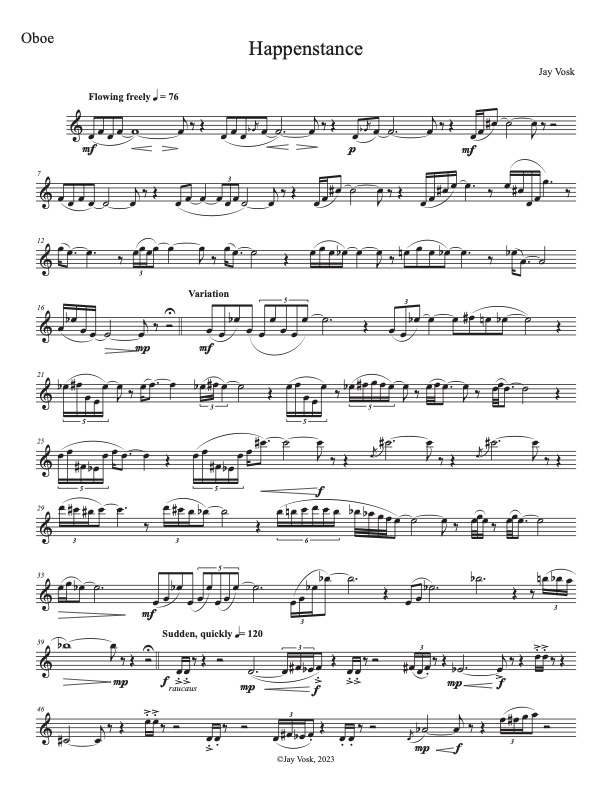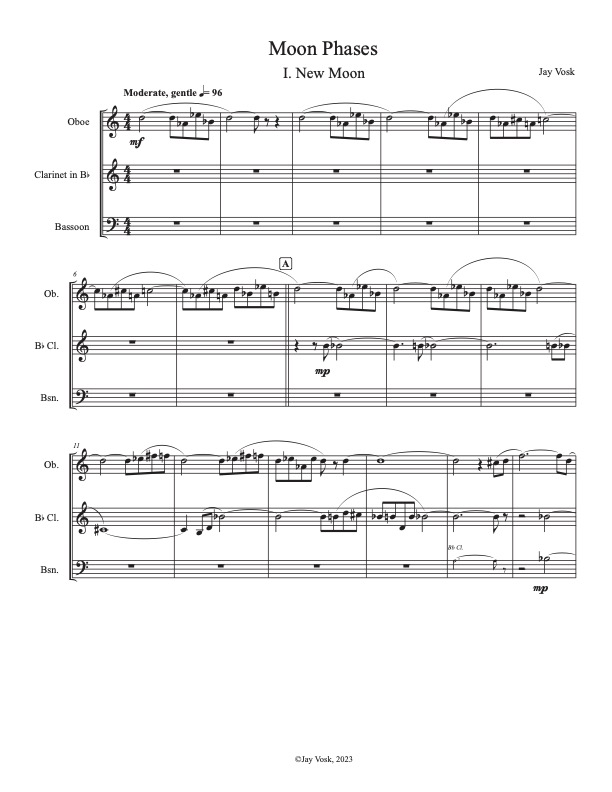
Points of Focus for Brass Trio is comprised of three brief movements. With each movement, I have associated some sort of visual imagery.
In the first movement ( bright, pointed) I visualize quick flashes of light shining on various points of a screen. Movement two (Slowing, easing up) seems to depict a series of flowing dark ribbons in shades of black and white, slowly rippling in the breeze. The final movement ( Bright, driving), is represented by what I perceive as pulsing spheres brimming with energy.
I would consider the performance level of the piece to be advanced/professional. The total performance time of the piece, including pauses, is approximately seven minutes. A PDF Score and parts are available on request.




